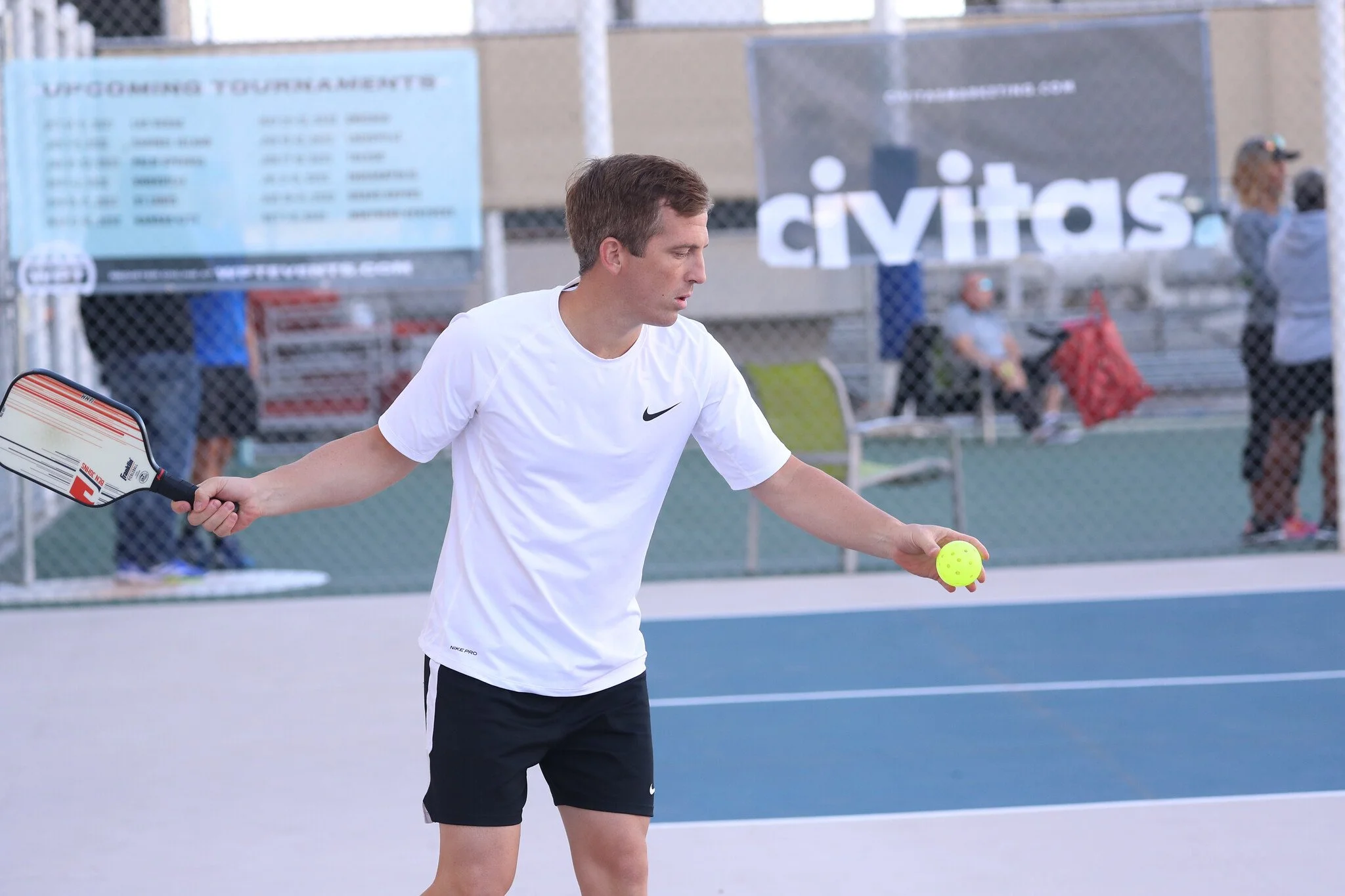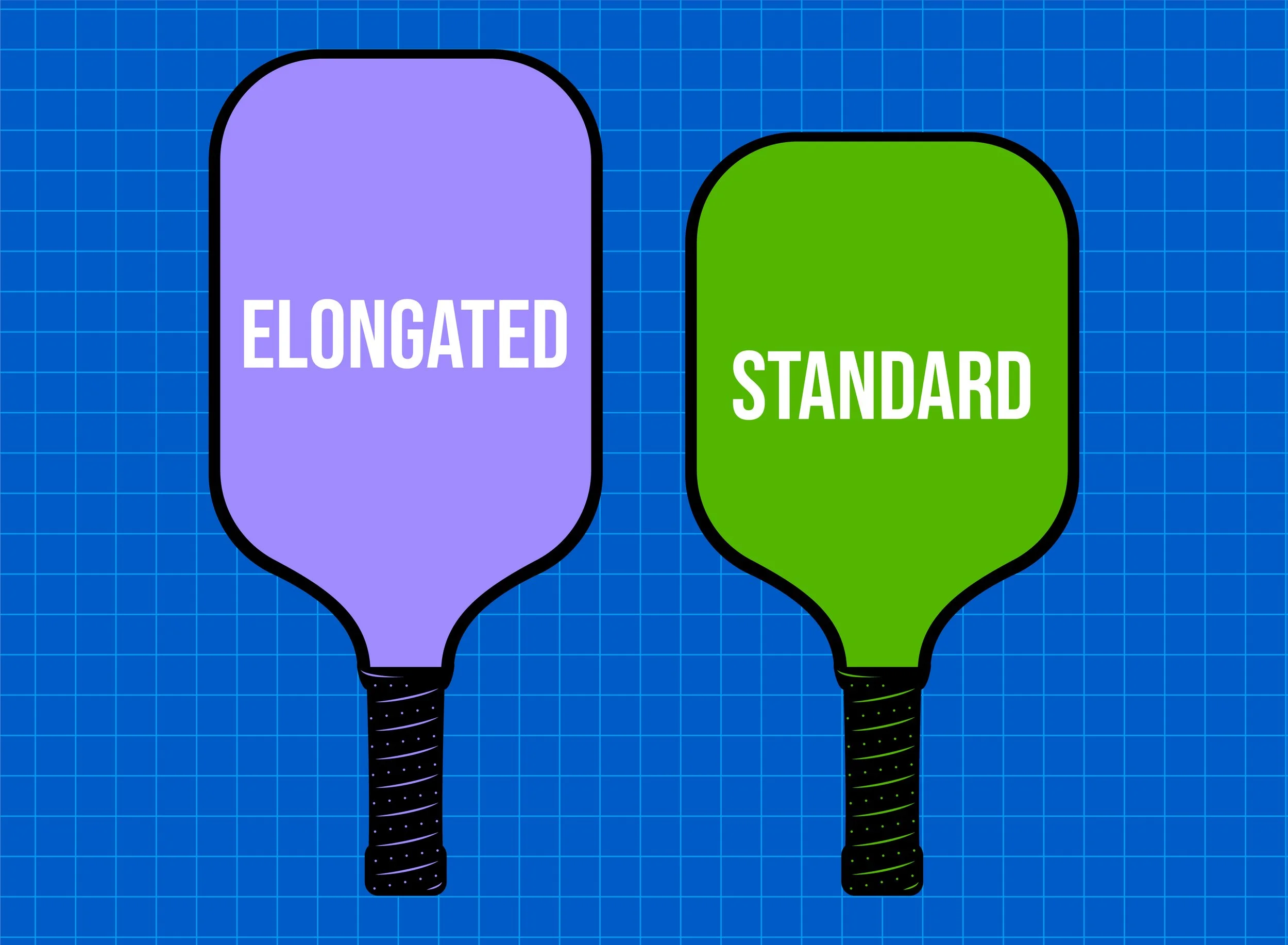Don't Buy a Pickleball Paddle Until You Read This Guide
Pickleball is one of the most exciting new sports in years, and people all over America are discovering how fun it is. Before you can get in the game, you'll first need to pick out a paddle.
If you want to be good at pickleball, then you'll need to find a comfortable paddle that matches and enhances your playing style.
In this guide, we will review everything you need to know to choose the perfect paddle and play your best.
Body Types of Pickleball Paddles
Due to the rising enthusiasm surrounding pickleball, new and different paddles are hitting the market all the time. Long gone are the days when a standard paddle is your only option.
The newest paddles frequently feature improved materials such as polymer honeycomb, making them faster, lighter, or more durable, but occasionally a new paddle shape will emerge.
Edgeless Pickleball Paddles
Edgeless paddles are unique in that they don't have the standard protective guard running around the edge of the paddle. Many of the very best players choose to use edgeless paddles because they increase the playing surface area on the face of the paddle.
The downside to edgeless paddles is that they are more prone to chipping and cracking due to the lack of protective support. In most cases, an edgeless paddle will not be the best choice for those who are new to pickleball, but if you are already a skilled player, then this may be a good option for you.
Wide-body Pickleball Paddles
The most common pickleball paddle shape is the wide-body design which maximizes the dimensions allowed by the USAPA approved rules of pickleball. In other words, this paddle shape offers the largest hitting surface that you can use in competitive play and a large sweet spot. Due to them being easier to use, more forgiving, and often less expensive than other paddles, wide-body paddles are an excellent choice for those who are new to the sport.
Elongated Pickleball Paddles
One of the new shapes to emerge recently, which is gaining a lot of popularity, is the elongated shape pickleball paddle. Elongated paddles have less width to the paddle face width but feature an increased paddle length.
This type of paddle usually comes with a longer handle length and the shape provides extra reach but makes it more difficult to strike from the sweet spot in the center of the paddle. Choosing the best elongated pickleball paddles can be difficult without play testing them first. Elongated paddles are great for seasoned players but may not be as comfortable for beginners. For this reason, it is recommended that you find a paddle with a 30-day satisfaction warranty.
Factors to Consider When Choosing a Pickleball Paddle
Once you’ve decided on a shape, it’s time to go over other options including paddle weight, grip size, and paddle materials.
The Weight of the Paddle
Most experienced pickleball players will tell you that the most important thing to consider when buying a new paddle is the weight, and there's some truth in this. Paddles vary in weight from six to fourteen ounces, and although that may not sound heavy, remember that you will often be holding and swinging the paddle for hours at a time.
Lightweight, Middleweight, or Heavweight
Lightweight paddles generally weigh anywhere from six to about eight ounces, and they are much easier to swing. This easy swing allows for fast movements and returns, but the trade-off is a loss in power.
Middleweight paddles weigh between eight and ten ounces and offer a good middle ground between ease of swing and power. For beginners, it’s best to go with a light to midweight paddle that weighs between seven and nine ounces, as this will provide you with the best of both worlds – a good amount of speed and some power on the ball.
Heavy paddles weigh more than ten ounces and help you generate power due to their increased mass. However, like with lightweight paddles, there is a downside that comes with using a heavy paddle. You will require more strength to use the paddle for a long period of time because of its increased weight, and you won't be able to wield it as quickly.
Paddle Grip Size and Grip Circumference
The size of the grip and grip length that you use are important. If you don't have the right size, comfortable grip for your hand circumference, then it will be uncomfortable to play with your paddle for extended periods of time. An easy way to choose your grip size is to base it on your height.
· If you are 5'2" and under, then you should use a 4" grip.
· If you are 5'3" – 5'8", then consider a 4 1/8" - 4 ¼" grip.
· If you are 5'9" or taller, use a 4 ½" grip.
Paddle Material Options
Different paddles are made from different materials, and the materials used can make a big difference in how the paddle performs on the court.
Wood
The original pickleball paddles were all made from wood, and wood is still a great option for those who are new to the game or want to get started without investing a lot of money in a more advanced paddle. Wood paddles aren’t great for tournament play but will hold up for trading dinks in a family-friendly game in the backyard.
Graphite
Unlike wooden paddles, graphite pickleball paddles contain a polymer core that adds power to the paddle. Graphite is also an incredibly light material which makes graphite paddles both easy to swing and powerful, which is an effective combination. Many competitive and skilled players use graphite paddles.
Fiberglass
Composite paddles are a happy middle ground between the basic wooden paddles and the high-tech, high-end graphite paddles. Composite paddles have a polypropylene honeycomb core just like graphite paddles, but they are constructed with fiberglass rather than graphite, making them a bit less durable and slightly heavier. The good thing about composite paddles is that they allow you to put the greatest amount of spin on the ball, thanks to their highly textured surface.
Carbon Fiber
Carbon fiber paddles are lightweight, responsive, and offer a great deal of power due to the weave and stiffness of the material. Carbon fiber paddles offer a firmer, crisp contact on the ball, while other composite paddles have a more cushioned surface. Carbon fiber is more expensive than other options but offers a premium playing experience.
What Brands Make Quality Pickleball Paddles?
There are several brands that manufacture high-quality pickleball paddles. Some of our favorites include JOOLA, Onix, Selkirk, Gamma, Gearbox, CRBN, and Vulcan. When considering a specific brand, look for paddles with high online reviews, specs that match what you want, and a description that mentions whether the paddle is best for beginners, intermediate, or advanced players.
Summary
People all over America are discovering how fun and exciting pickleball is, but before you can join in, you need to choose the perfect paddle. Pickleball paddles come in all shapes and sizes, so there are a few factors to consider when choosing one, including the weight of the paddle, the grip size, and the paddle materials.
It’s best to try a few paddles before purchasing one so you can choose a paddle that feels right and can grow with you as your skills increase. For some recommendations, check out our guide on six of the best pickleball paddles for beginners.






